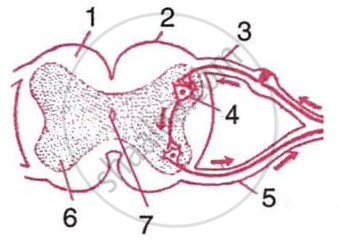Advertisements
Advertisements
प्रश्न
Differentiate between Voluntary and involuntary actions.
उत्तर
| Voluntary Action | Involuntary Action |
| 1. The actions which are under the control of our will, eg. Eating, walking. | 1. The actions, which are not under our control, eg. Breathing, Heartbeat. |
| 2. Controlled by the brain. | 2. Controlled by the spinal cord. |
| 3. Voluntary Action results in muscular action. | 3. Involuntary actions result in a muscular action or secretions of some glands. |
APPEARS IN
संबंधित प्रश्न
Which part of the brain maintains posture and equilibrium of the body?
State one function each of cerebellum and pons.
Which of the following statements are true?
(i) sudden action in response to something in the environment is called reflex action
(ii) sensory neurons carry electrical signals from spinal cord to muscles in a reflex action
(iii) motor neurons carry signals from receptors to spinal cord in a reflex action
(iv) the pathway of transmitting signals from a receptor to a muscle is a reflex action
State whether the following is simple reflex, conditioned reflex or neither of the two:
Sneezing: …………….
List in tabular form three distinguishing features between cerebrum and cerebellum.
Explain the following term :
Conditioned reflex
State whether the following is
Cleaning
Complete the following sentence with appropriate Word
The control of reflex action is through:
Complete the following sentence with appropriate Word
Which of the following is not a natural reflex action?
Given alongside is a partial diagrammatic representation of a certain phenomenon pertaining to the nervous system.
 |
- Name the parts numbered 1-7.
- Name the phenomenon that the diagram depicts and define it.
- Give the technical term for the point of contact between two nerve cells.
- Name the parts not shown in the diagram that should be included to complete the pathway of the phenomenon.
